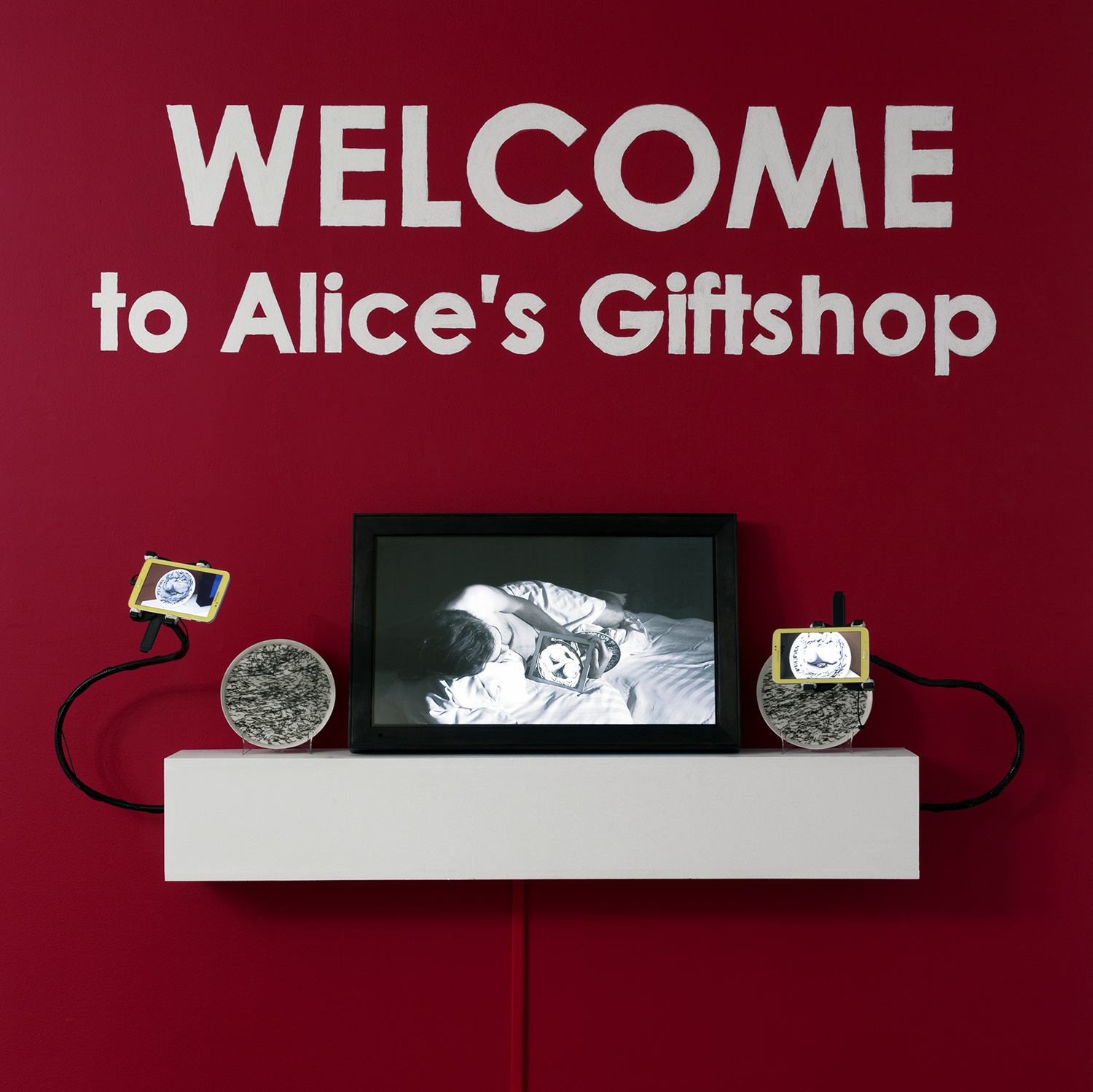
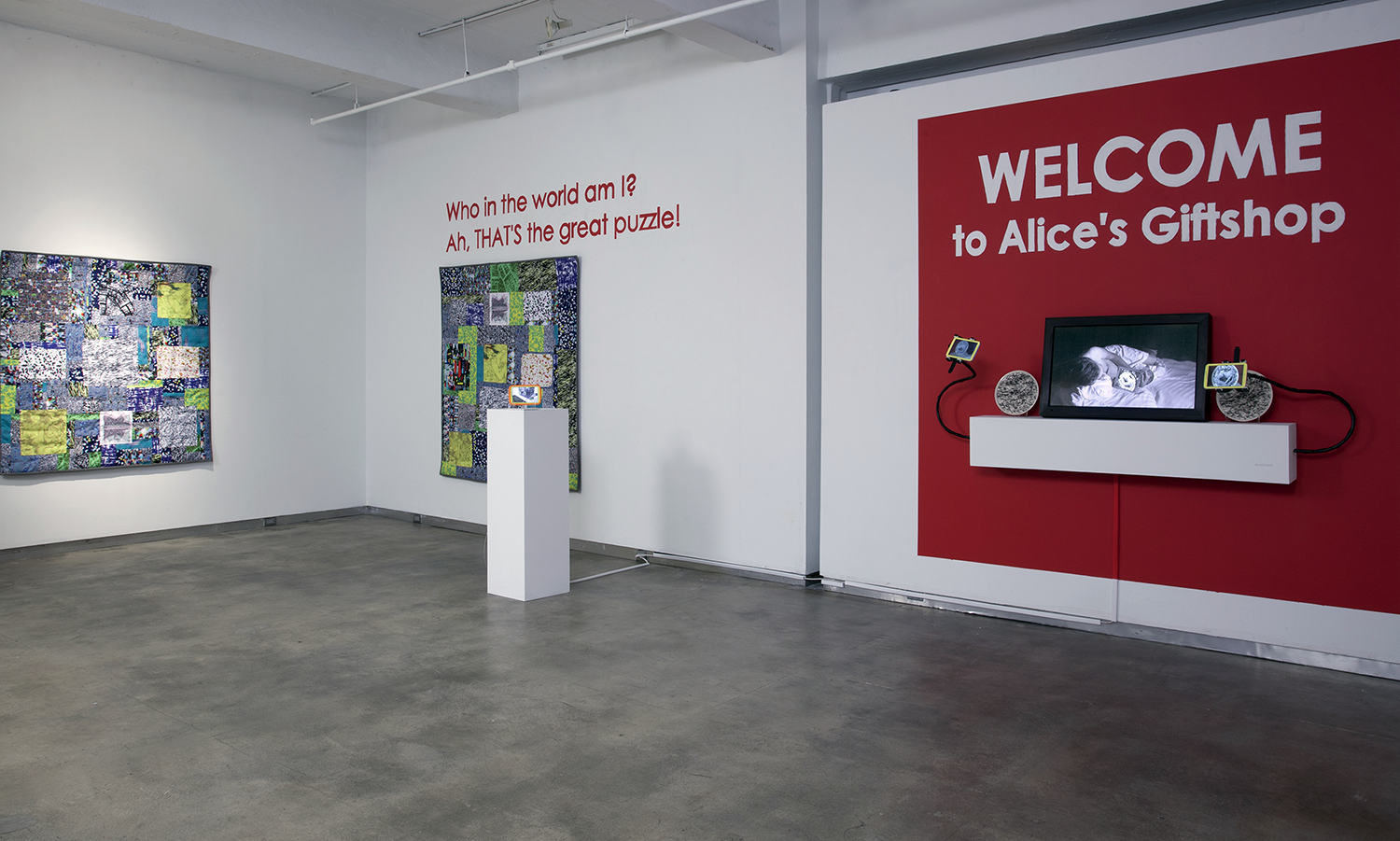
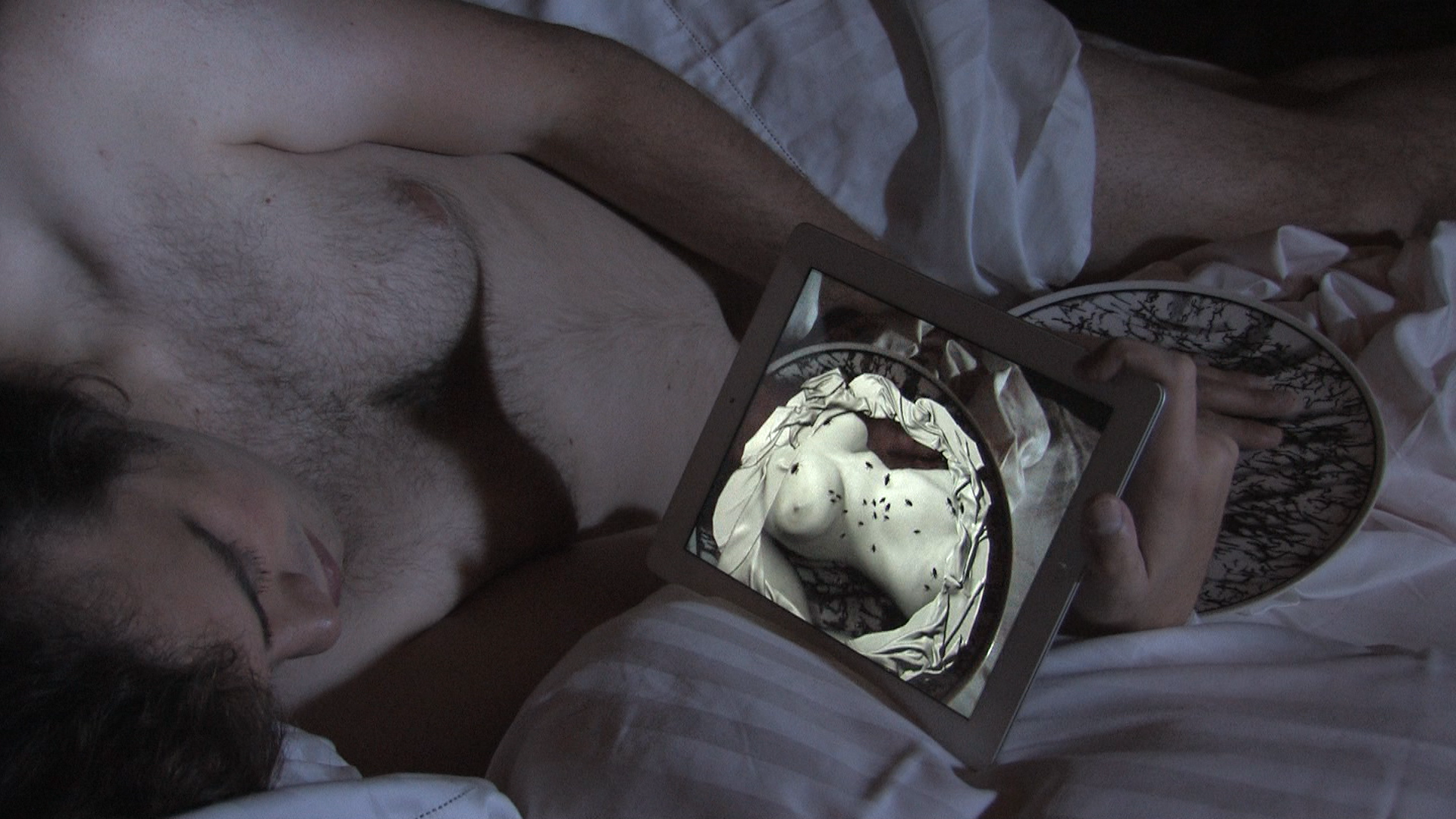
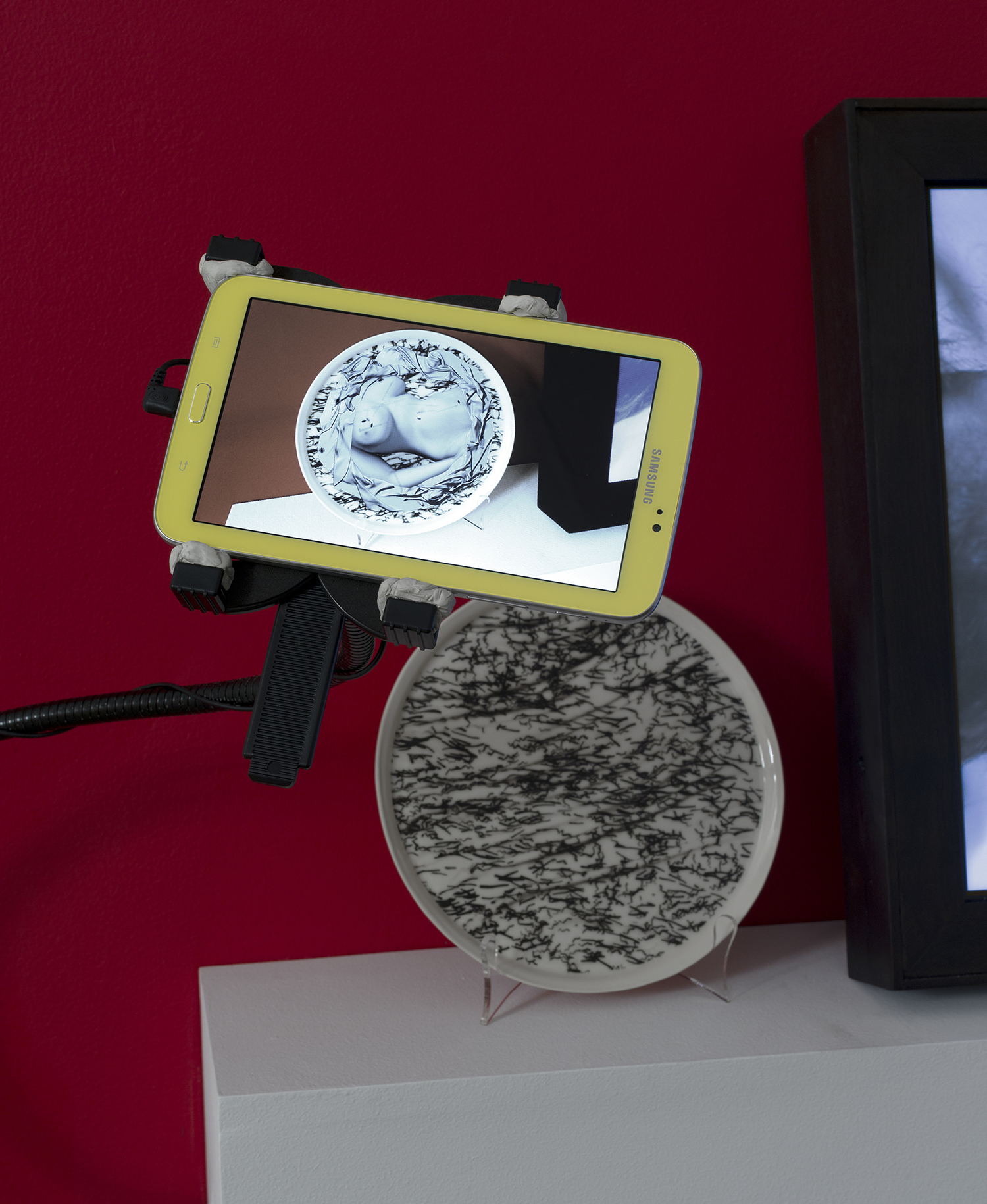








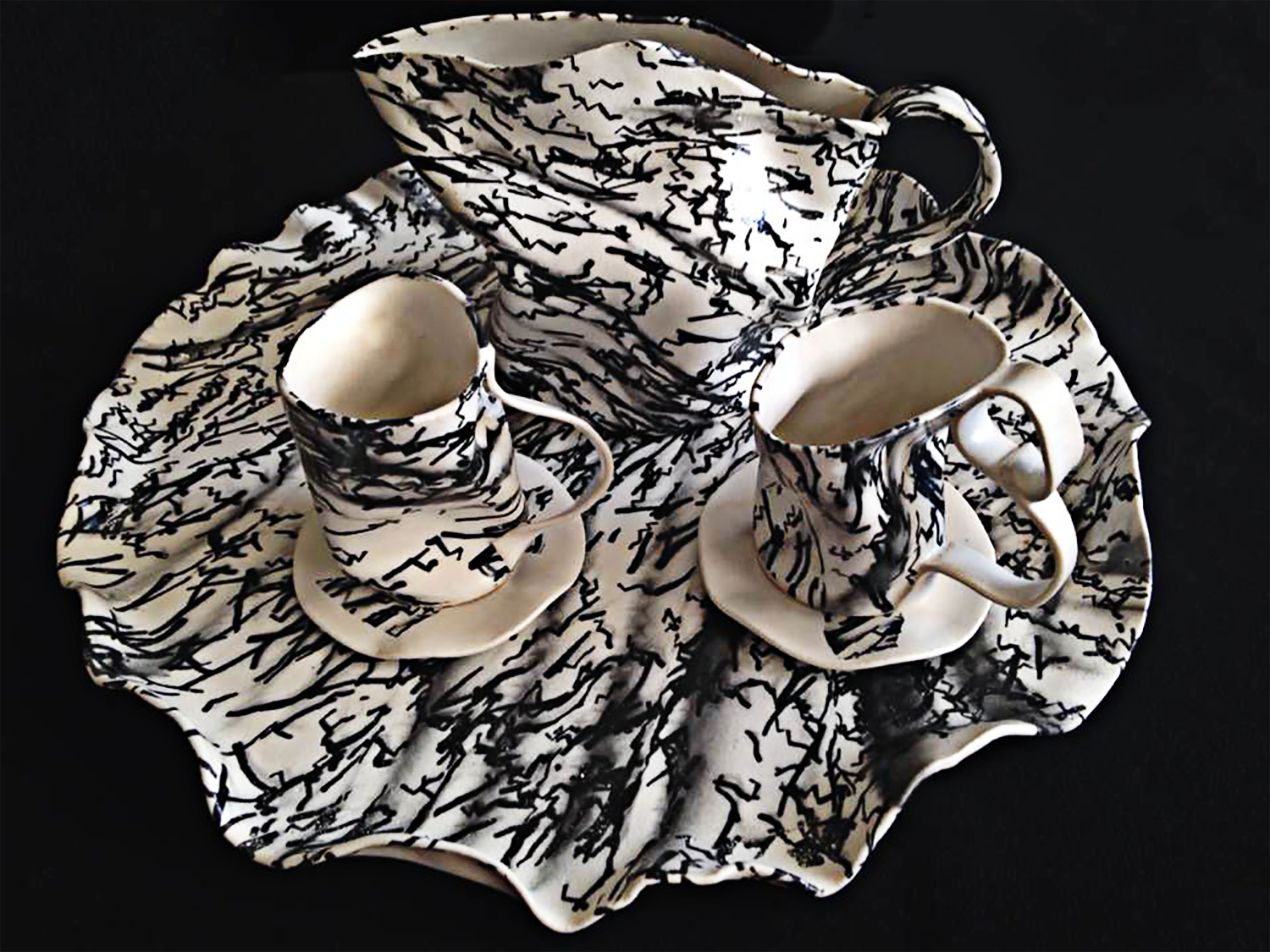
Alice’s Giftshop
bitforms gallery ny
May 3 – May 31, 2014
The New Museum, New York
August – November, 2014
Alice’s Giftshop is an artistic frame by Claudia Hart that emerged from a series of live performances inspired by Lewis Carroll’s 1865 Alice’s Adventures in Wonderland, exploring a populist culture so addicted to the devices of high technology that it can only bear a world that is filtered through them. The Alices series, all created in collaboration with the composer Edmund Campion, premiered in 2013 at The Arts Club of Chicago and was re-staged again in Chicago at the Frank Gehry’s Pritzker Center Theater in Millennium Park. In The Alices Walking, 2014, Hart introduced her augmented patterns now printed onto custom fabrics, crafted into wearable sculptures for an opera-cum-fashion show. The Alices Walking premiered at The Eyebeam Center for Art + Technology in Chelsea on March 9, 2014, followed by the May 2014 bitforms gallery exhibit, and the August-November New Museum gift-shop installation.
The bitforms gallery Welcome to Alice’s Gift Shop! featured Hart’s augmented-reality tableware and quilts, and three new participatory projects that engage virtual worlds, literary nonsense and domestic craftsmanship. Using a variety of platforms, Hart’s presented two realities: the physical and the hidden; or the dormant and the expressive. Steeped in the clichés of data-driven, punk and Romantic aesthetics, the works build a space that is interactive and irrational. Each composition was navigable using hand-held devices, which deliver animated and text-based content. Programmed by the artist, these multimedia objects crafted metaphors that unfolded using computer-vision, revealing “magical” layers of new information. The spectacle of new technology complicated three-dimensional form, as Hart paired technical precision with raw, emotional subjectivity.
In her a series of artisanal plateware, Hart has brought the conversation of technology to the dinner table, a site long equated with Feminist strategy. Here, the experience of a feast was disrupted by a virtual world, which could only be sustained computationally. Produced in hand-thrown porcelain, her Nue Morte augmented ceramics drew on the visual style and psychological subject matter of early Surrealist photography and film. They presented a naked sleeping odalisque that is viewable using custom augmented-reality software. As the plates’ inscribed decorative pattern was recognized with a custom tablet, a sleeping figure tossed and turned, apparently lying across one's meal. Evoking early technologies of the peephole camera and the Zoetrope, Nue Morte rendered a dreamlike subconscious space. The illusory female figure, as well as any food placed on the plate (when functional) was overrun by artificially intelligent insects, which crawl in endlessly mutating patterns. Double Narcissus, a related video and companion piece, frames the viewer’s gaze upon a male body that lies in bed with the plate, suggesting reproduction or cloning.
Hart’s series of decorative multimedia quilts similarly subverted the classic stereotype of so-called “domestic handicraft”. Also a play on the homespun narrative, the quilts delivered stories that are read with embedded pattern tags, which are programmed to be viewable with a custom tablet reader. Excerpts of Carroll’s text flash on-screen, and augment the geometric abstraction presented in a fabric picture plane. This is a system vulnerable to glitches and decay, as Carroll’s original narrative is degenerated into text graphics that evoke pop- up banner ads and trashy web design. Strobing concrete poetry emerges, as a result of haptic communication between the human and the machine.
Text: Laura Blereau